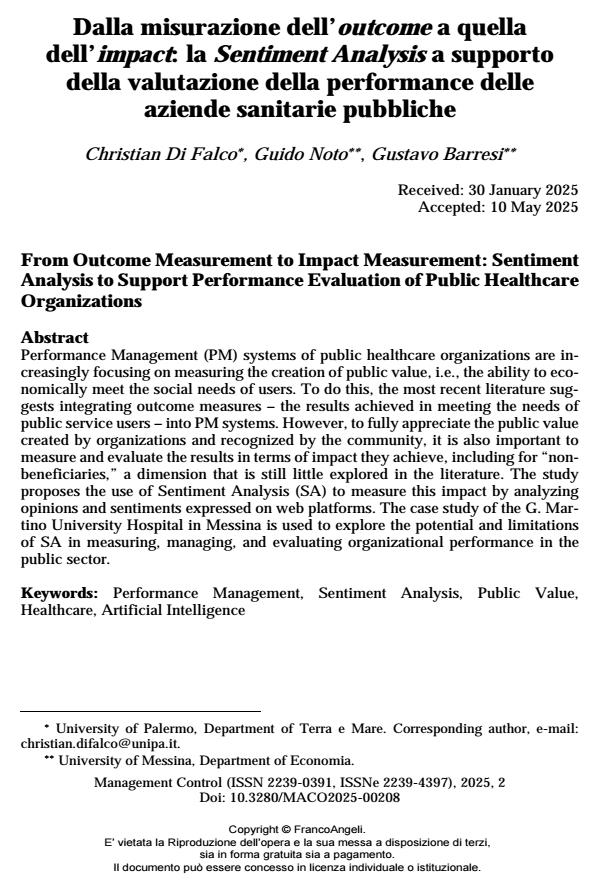Dalla misurazione dell’outcome a quella dell’impact: la Sentiment Analysis a supporto della valutazione della performance delle aziende sanitarie pubbliche
Titolo Rivista MANAGEMENT CONTROL
Autori/Curatori Christian Di Falco, Guido Noto, Gustavo Barresi
Anno di pubblicazione 2025 Fascicolo 2025/2
Lingua Italiano Numero pagine 21 P. 157-177 Dimensione file 157 KB
DOI 10.3280/MACO2025-002008
Il DOI è il codice a barre della proprietà intellettuale: per saperne di più
clicca qui
Qui sotto puoi vedere in anteprima la prima pagina di questo articolo.
Se questo articolo ti interessa, lo puoi acquistare (e scaricare in formato pdf) seguendo le facili indicazioni per acquistare il download credit. Acquista Download Credits per scaricare questo Articolo in formato PDF

FrancoAngeli è membro della Publishers International Linking Association, Inc (PILA)associazione indipendente e non profit per facilitare (attraverso i servizi tecnologici implementati da CrossRef.org) l’accesso degli studiosi ai contenuti digitali nelle pubblicazioni professionali e scientifiche
Performance Management (PM) systems of public healthcare organizations are increasingly focusing on measuring the creation of public value, i.e., the ability to economically meet the social needs of users. To do this, the most recent literature suggests integrating outcome measures – the results achieved in meeting the needs of public service users – into PM systems. However, to fully appreciate the public value created by organizations and recognized by the community, it is also important to measure and evaluate the results in terms of impact they achieve, including for “non-beneficiaries,” a dimension that is still little explored in the literature. The study proposes the use of Sentiment Analysis (SA) to measure this impact by analyzing opinions and sentiments expressed on web platforms. The case study of the G. Martino University Hospital in Messina is used to explore the potential and limitations of SA in measuring, managing, and evaluating organizational performance in the public sector.
Parole chiave:Performance Management, Sentiment Analysis, Public Value, Healthcare, Artificial Intelligence
Christian Di Falco, Guido Noto, Gustavo Barresi, Dalla misurazione dell’outcome a quella dell’impact: la Sentiment Analysis a supporto della valutazione della performance delle aziende sanitarie pubbliche in "MANAGEMENT CONTROL" 2/2025, pp 157-177, DOI: 10.3280/MACO2025-002008